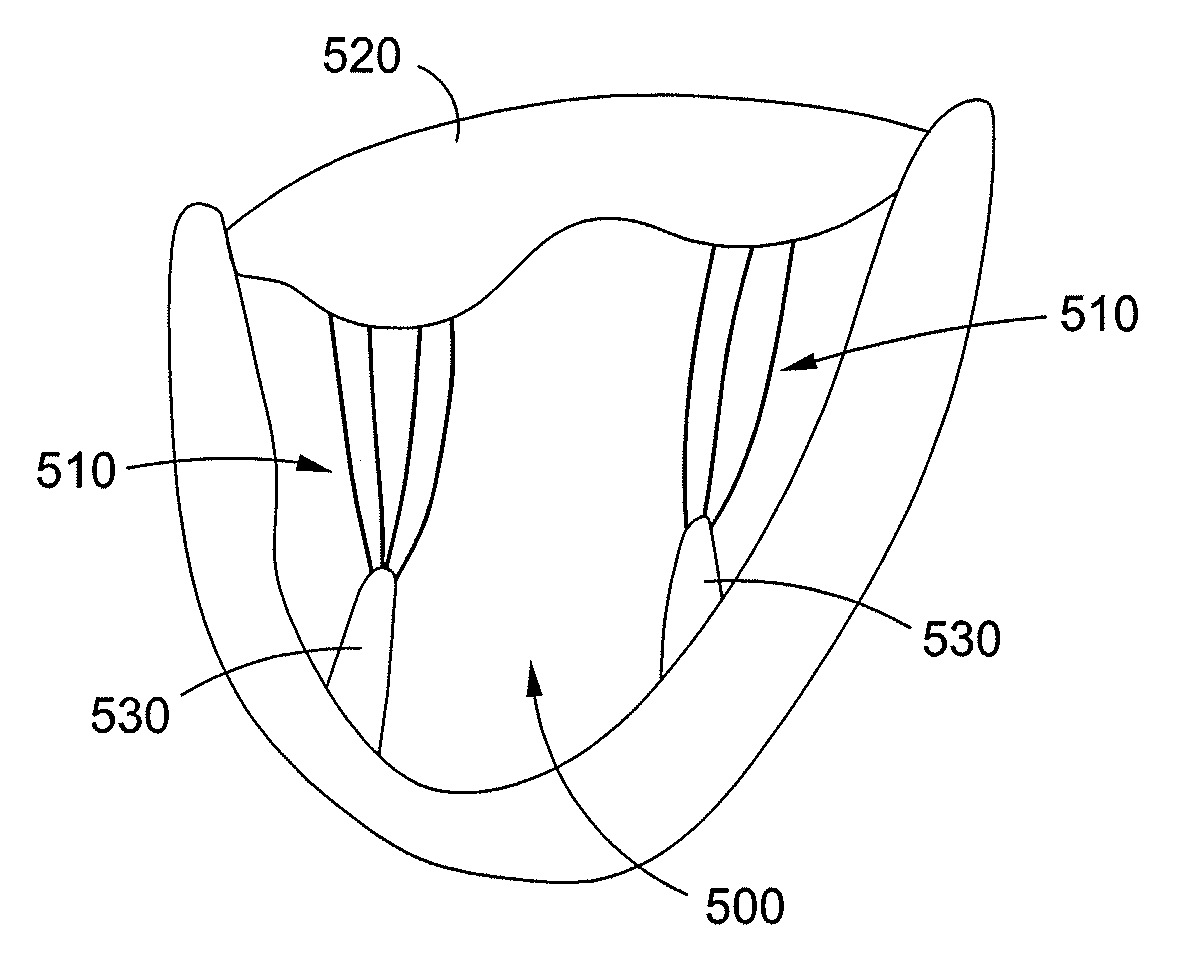Dynamically adjustable suture and chordae tendinae
a dynamically adjustable suture and chordae technology, applied in the field of artificial chordae tendinae, can solve the problems of significant limitations to the usefulness of currently available methods and devices for repairing heart defects arising from injury or disease, significant decrease in the area of the mitral valve, and mitral stenosis, so as to reduce the delivery of activation energy
- Summary
- Abstract
- Description
- Claims
- Application Information
AI Technical Summary
Benefits of technology
Problems solved by technology
Method used
Image
Examples
Embodiment Construction
[0078]In the present disclosure, embodiments of artificial dynamically adjustable chordae tendinae take advantage of the properties of shape memory materials in order to provide an improved implant for use in the repair of cardiac valve defects. In particular, embodiments of the implant allow for precise configuring of the artificial chordae to provide optimal correction of a valvular defect.
[0079]A normal mitral valve 2 is illustrated in FIGS. 1A and 1B, and can be divided into three parts, an annulus 4, a pair of leaflets 6, 8 and a sub-valvular apparatus.
[0080]FIGS. 2A and 2B illustrate embodiments of dynamically adjustable artificial chordae tendinae 100 prior to activation of the shape memory component portions. Dynamically adjustable artificial chordae tendinae 100 can be any shape memory material, alloy, or polymer described above, and can be configured either as a monofilament or multifilament structure, or a collection of monofilament or multifilament structures. As illustr...
PUM
 Login to View More
Login to View More Abstract
Description
Claims
Application Information
 Login to View More
Login to View More - R&D
- Intellectual Property
- Life Sciences
- Materials
- Tech Scout
- Unparalleled Data Quality
- Higher Quality Content
- 60% Fewer Hallucinations
Browse by: Latest US Patents, China's latest patents, Technical Efficacy Thesaurus, Application Domain, Technology Topic, Popular Technical Reports.
© 2025 PatSnap. All rights reserved.Legal|Privacy policy|Modern Slavery Act Transparency Statement|Sitemap|About US| Contact US: help@patsnap.com



